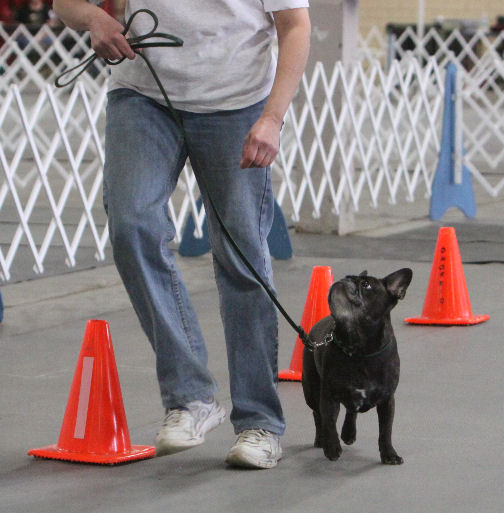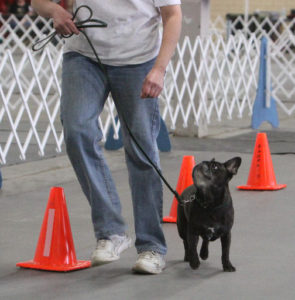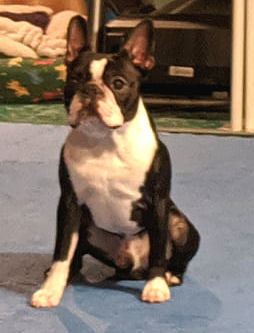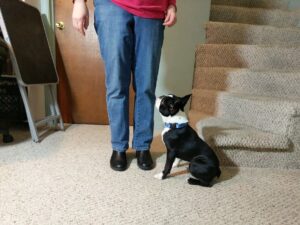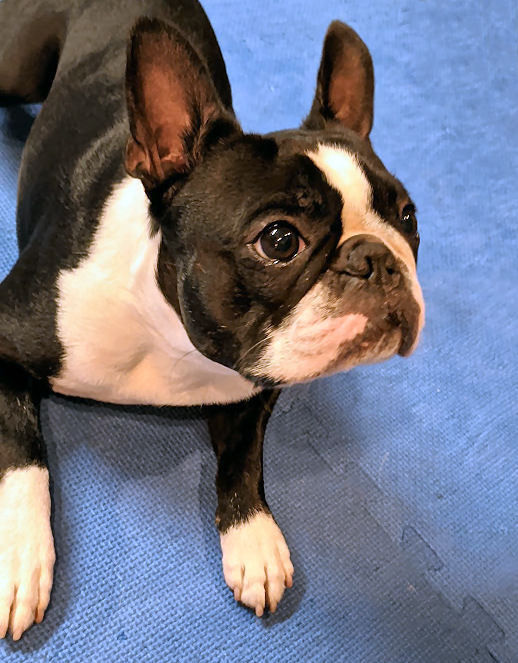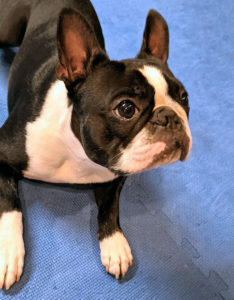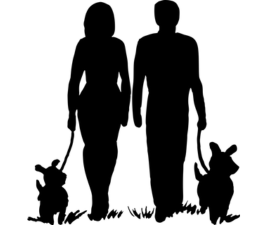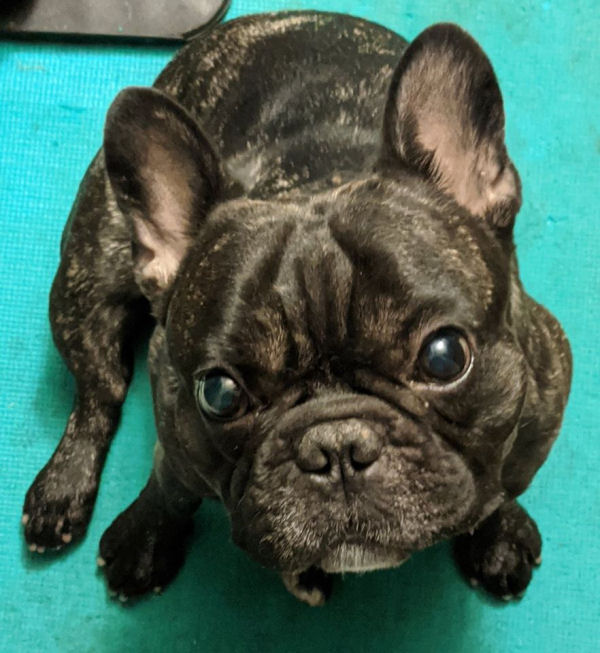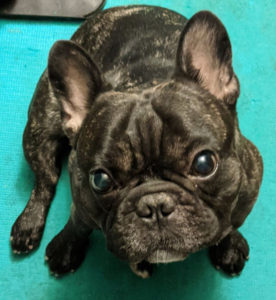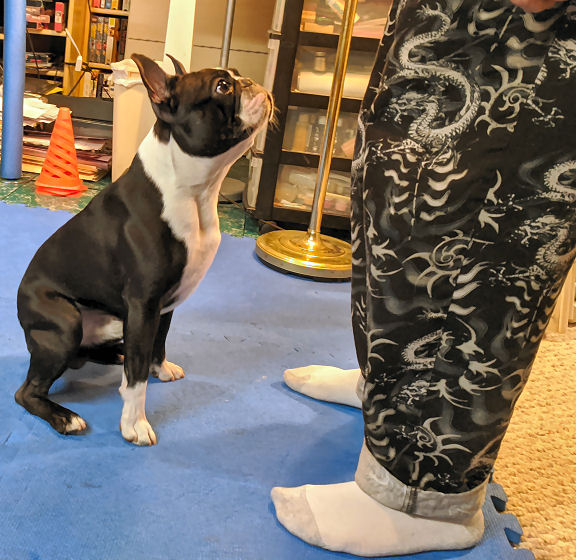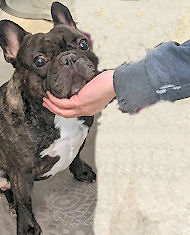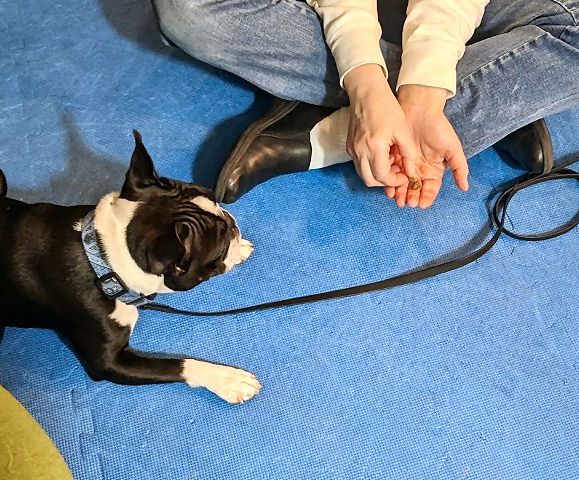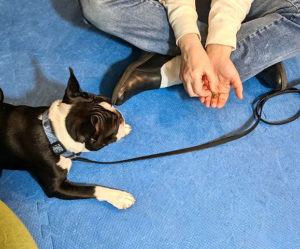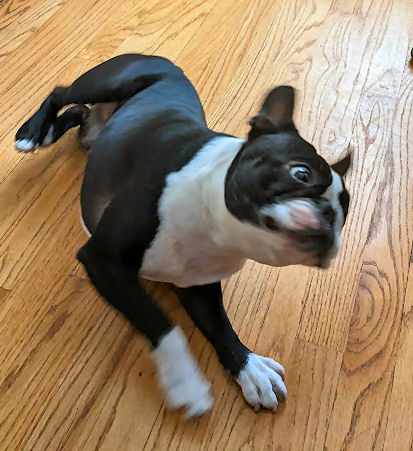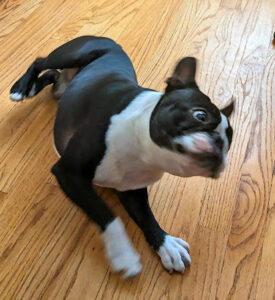For whatever reason, Hope wasn’t feeling very inspired with training games this week. Her French Bulldog Torque is always an eager participant, but Hope just wasn’t feeling any creative spark. What do you do when you don’t know what to do? Go back to the very beginning. It’s a very good place to start. And let your dog do the work for you.
Hope dug out a big old cardboard box, sat on the floor with a bowl of treats and told Torque to go for it. He’s been playing “Boxey!” since forever, but it’s been a while since Hope hauled it out.
The dog did not disappoint! He came up with two new games in just five minutes!
Let the dog do the work
Whoa! How did that happen?
If you need a Boxey refresher, it’s one of the first games we use to teach dogs how to learn and create. You just get a box, large enough and shallow enough for your dog to get into, and wait. You sit there on the floor near the box and let your dog figure stuff out. Whatever your dog does gets rewarded. (Except for trying to eat the box.) Every time they do something different, you throw a treat in the box.
That’s it. Simple enough. And yet there are still people who try to “help” their dogs. Yes, you may talk to your dog, encourage your dog, even pet your dog. You’re not allowed to tell them what to do. Let the dog do the work. Whatever they do is perfectly fine. Just be sure the box you use was headed for the recycle bin anyway.
Why so strict about not instructing your dog? Because the point of this game is to have your dog be creative. Whatever they come up with will give you some insight into what they understand, which games they like the most, how creative they can be, and how much they enjoy learning.
All that from a box
Dogs who aren’t trained with games and positive reinforcement from puppyhood may take a while to engage with the box. All their lives they’ve been strictly monitored and told what to do, when to do it, and how to act. They’ve never had to make a choice, so they don’t know how to choose. Some sit for the entire session, staring at the box. Their dogs are afraid to make a “wrong” choice, so they do nothing.
If that describes your dog, dig deep and call on all your patience. You can certainly talk to your dog. Be upbeat and keep up the chatter. Just don’t give them commands, orders, or instructions. If you’ve got nothing else to say, sing a song, share a poem, recite the Gettysburg address. It doesn’t matter, as long as you let your dog know you’re not upset or angry with them. The tone should be encouraging and happy.
It doesn’t matter
Whatever your dog does with the box is fine. It gets rewarded. Once they catch on to the game, they’ll love it. They get to play with their people and have fun. Because there’s no goal to the game, it takes the pressure off everyone.
You’re probably wondering what new games Torque made up with his latest Boxey session. The first was an extension of something we’ve done out of the box. He jumped into the box and went into his “Stomp!” behavior. It was adorable and we wish we had video.
“In and Out”
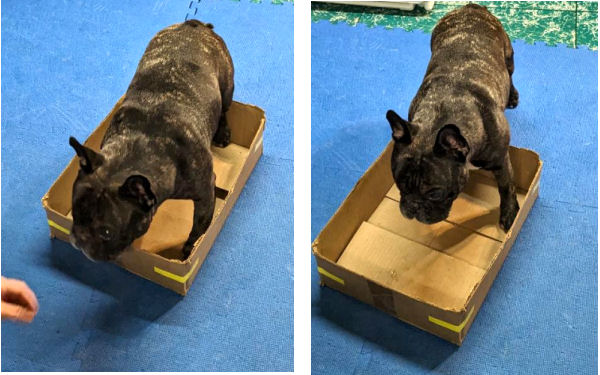
The second was brand new. When he’d been rewarded for “Stomp in the Box!” a few times, Hope said “We’ve seen that. What else?” He tried a few familiar behaviors (sit in the box, bow in the box), but Hope asked for something else. He moved his two back feet out of the box and then in again. Torque’s new game is “In and Out!” Like all new games, it needs some more practice before it’s polished. And Hope knows she truly has a partner. When she couldn’t come up with something new, he did. That’s the beauty of playing training games with your dog. Sometimes you let the dog do the work. And the partnership is always amazing.

